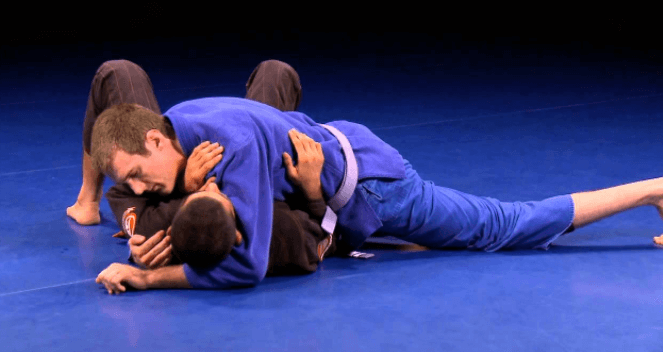
Here we are again on the subject of Brazilian Jiu-Jitsu basic moves. In all other martial arts and combat sports, everyone knows what the basic moves that you learn are. From boxing to Judo, people have a fundamentals curriculum that tends to be the same all over the world. Enter BJJ, and every academy, and even every coach, has their own idea of what is basic and fundamental. That’s cool, and if it works, why change it? However, experimenting from time to time might just yield better results, or help you come up with a brand new idea and maybe even lead to developing Brazilian Jiu-Jitsu world champions. So, I’ll just share my latest experiences, and let you decide how to run your fundamentals.
No matter how we approach Gracie Jiu-Jitsu fundamentals, there are certain Brazilian Jiu-Jitsu basic moves that we all agree upon. What people usually see differently is the order in which to teach them. And that is perfectly ok. However, after using the Covid-19 lockdown fiasco to really research how other coaches organize their training sessions, I’ve come up with a plan that seems to offer the best possible results. It may seem a little out there, and I’ve just started implementing it. However, I’ll share all results after spending a while in it. And, a big focus is on the Brazilian Jiu-Jitsu basic moves and the fundamentals groups.
Learn Submissions First
Yeah it is odd. It may seem like there’s no context to it all, but if you really come to think about it, it makes perfect sense. Why should you teach submissions first? Well, for starters, they’re the ultimate goal of every match. Moreover, they’re exactly what you should be looking for in a self-defense scenario. Finally, they’re the most dangerous parts of training BJJ and as such, require the most attention. Plus, explaining the entire concept of tapping out is much easier when you’re actually using nothing but submissions.
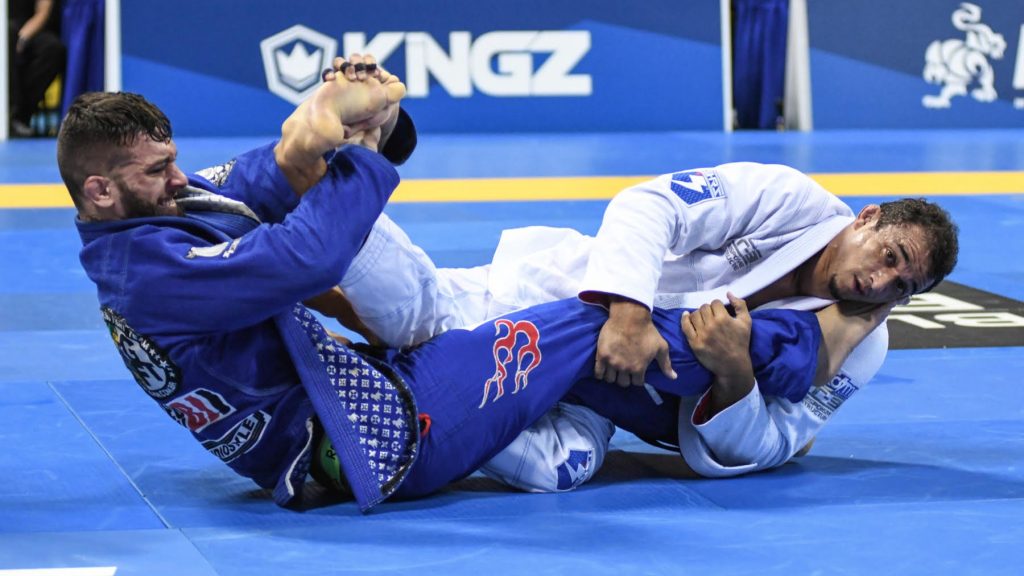
The key lesson they learn here is to tap. They also get a fee for the finish and tension of each move, without having to learn how to get there in the first place. Entries and positional holds tend to be difficult for higher belts to learn, let alone new students. And we just glance over them on our way to submission, leaving their minds confused and full of stuff they can’t utilize. Going for a submission-only course for a couple of months for every new student is a great way of simplifying things and making JIu-Jitsu really interesting from the get-go.
Movement Comes Next
Movement comes next. It is what most people think of in terms of Brazilian Jiu-Jitsu basic moves anyway. However, once again, people tend to go overboard. Yes, teaching people how to move through space in a grappling sense is important and crucial. However, we have to focus on the right moves that they’ll be using all the way to black belt. Backward break falls that proceed to press handstands are not really that important at this level.
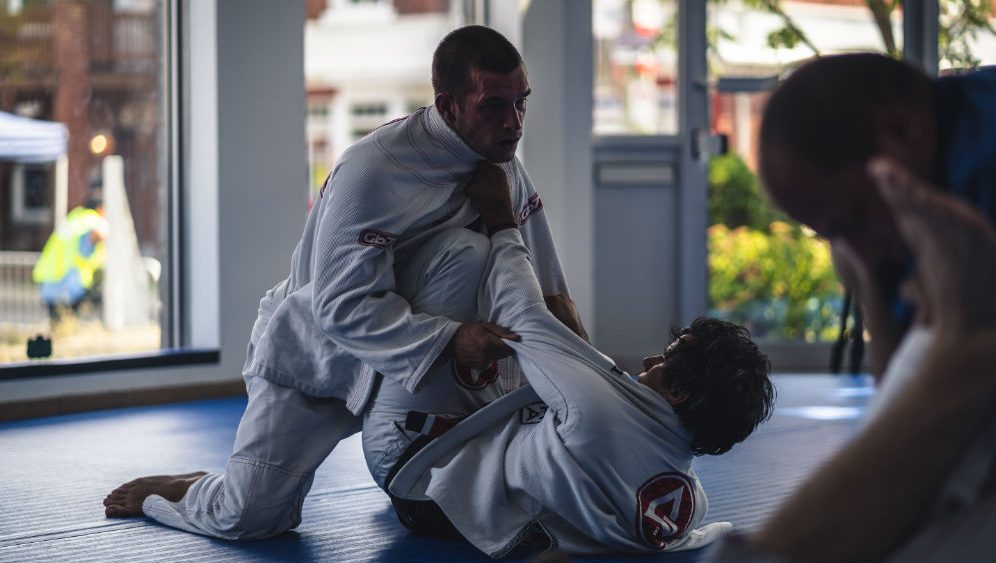
More offensively speaking, you’ll need to teach people balance. While still not really talking about positions, use drills to teach people how to move when an opponent is resisting. Simply having them drill to get past the lags, while the bottom person does nothing but retention will make them extra efficient at movement, before they learn the ins and outs of all the positions. Which, conversely, comes next.
Brazilian Jiu-Jitsu Basic Moves: The Positions
Once again, I’ll use a concept that will defy most people’s approach to Jiu-jitsu. It is okay, as this is my take on things, and the results will show if I was right or wrong. Just don’t let any of the “guinea pigs” in my experimental group what I’m doing. Jokes aside, positions in BJJ come in three different categories – standing, top, and bottom. And those are the three distinctions any beginner should be able to make. After they learn about submissions and how to move like a grappler.
Keep things simple here – there’s no need to talk about worm guards just yet. Closed and half guard is all you need to show from the bottom. Tie them with the movement patterns of retention and hip work from below and you’ve got a game for beginners to play. Plus they already know where all the submissions are, so when you show an armbar from guard now, they’ll know the end point, and how to use their hips to get it. Guard now makes a lot more sense to them and they actually think and learn about the position itself.
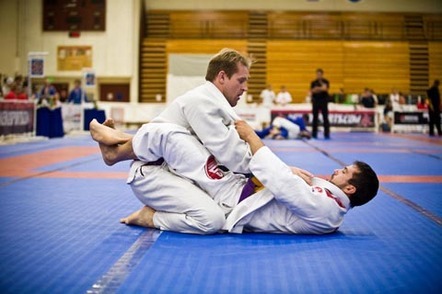
Finally, when it comes to takedowns, teach them backward. Start with control on the ground. Then, drill the takedown itself, from the last moment of standing. Then go one step back and drill the entry, then go a step back and drill the grips and level changes. This is how people get to work on the actual takedown and control more than on the movement and grips part. It also works great in kids classes.
The best way to get people to learn how to apply them in rolling? Give them endless rounds of positional sparring for each of the above.
Final Thoughts
All in all, Brazilan Jiu-Jitsu basic moves can be whatever you say they are as a coach. As long as you can make things have sense, you can teach people however you want. The approach I have is that people that walk in the Jiu-Jitsu gym are neither retarded nor 3-year olds and they can understand and do much more than we give them credit. Why not teach them the real Brazilin Jiu-Jitsu basic moves off the bat, instead of trying to teach them the right ways over again when they become purple belts or so? After all, Brazilian Jiu-Jitsu developed quite a lot throughout the years, and so should our teaching methods.


![Darce Choke Encyclopedia – Origins, Mechanics and Variations [2025] BJJ, choke, Brabo, BJJ Darce Choke, D'arce Choke, Darce BJJ Choke](https://bjj-world.com/wp-content/uploads/2017/11/JungPoirierLeeYahoo-218x150.jpg)










![Slicin’ Calves Mikey Musumeci DVD Review [2025] Slicin' Calves Mikey Musumeci DVD Review](https://bjj-world.com/wp-content/uploads/2025/04/slicin-calves-mikey-musumeci-dvd-review-218x150.png)
![Jiu-Jitsu For Old Guys Guard Retention Bernardo Faria DVD Review [2025] Jiu-Jitsu For Old Guys Guard Retention Bernardo Faria DVD Review](https://bjj-world.com/wp-content/uploads/2025/03/old-guys-guard-retention-bernardo-faria-dvd-review-218x150.png)
![X-Guard Trickery Kyle Sleeman DVD Review [2025] X-Guard Trickery Kyle Sleeman DVD Review](https://bjj-world.com/wp-content/uploads/2025/03/x-guard-trickery-kyle-sleeman-dvd-review-218x150.png)
![Countering with Crab Ride Anthony Budion DVD Review [2025] Countering with Crab Ride Anthony Budion DVD Review](https://bjj-world.com/wp-content/uploads/2025/03/countering-with-crab-ride-anthony-budion-dvd-review-218x150.png)
![Closet Closed Guard Craig Jones DVD Review [2025] Closet Closed Guard Craig Jones DVD Review](https://bjj-world.com/wp-content/uploads/2025/03/closet-closed-guard-craig-jones-dvd-review-218x150.png)
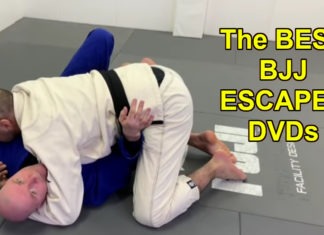
![Shin to Shin Eoghan O’Flanagan DVD Review [2025] Shin to Shin Eoghan O'Flanagan DVD Review](https://bjj-world.com/wp-content/uploads/2024/12/shin-to-shin-eoghan-oflanagan-dvd-review-100x70.png)
![Position And Submission Escapes Craig Funk DVD Review [2025] Position And Submission Escapes Craig Funk DVD Review](https://bjj-world.com/wp-content/uploads/2025/02/position-and-submission-escapes-craig-funk-dvd-review-100x70.png)
![Jeff Higgs Self Defense Guard BJJ DVD Review [2024] Jeff Higgs Self Defense Guard BJJ DVD Review](https://bjj-world.com/wp-content/uploads/2024/09/jeff-higgs-self-defense-guard-bjj-dvd-review-100x70.png)

![Dynamic Headquarters Passing Jason Rau DVD Review [2024] Dynamic Headquarters Passing Jason Rau DVD Review](https://bjj-world.com/wp-content/uploads/2024/10/dynamic-headquarters-passing-jason-rau-dvd-review-100x70.png)
![Tricks for Unstoppable Takedowns Georges St Pierre DVD Review [2024] Tricks for Unstoppable Takedowns Georges St Pierre DVD Review](https://bjj-world.com/wp-content/uploads/2024/12/unstoppable-takedowns-georges-st-pierre-dvd-review-100x70.png)
![Back Control and Submission Felipe Pena DVD Reveiw [2025] Back Control and Submission Felipe Pena DVD Reveiw](https://bjj-world.com/wp-content/uploads/2025/01/back-control-and-submission-felipe-pena-dvd-reveiw-100x70.png)
![Advanced Chin Control Concepts David Petrone DVD Review [2025] Advanced Chin Control Concepts David Petrone DVD Review](https://bjj-world.com/wp-content/uploads/2025/01/chin-control-concepts-david-petrone-dvd-review-100x70.png)
![Best Marcelo Garcia Techniques by Team Marcelo Garcia DVD Review [2025] Best Marcelo Garcia Techniques by Team Marcelo Garcia DVD Review](https://bjj-world.com/wp-content/uploads/2025/02/best-marcelo-garcia-techniques-dvd-review-100x70.png)


![Foot Sweep the World Dainis Nguyen-Huu DVD Review [2024] Foot Sweep the World Dainis Nguyen-Huu DVD Review](https://bjj-world.com/wp-content/uploads/2024/11/foot-sweep-the-world-dainis-nguyen-huu-dvd-review-100x70.png)


![Total Domination Top Control Mariusz Domasat DVD Review [2024] Total Domination Top Control Mariusz Domasat DVD Review](https://bjj-world.com/wp-content/uploads/2024/09/domination-top-control-mariusz-domasat-dvd-review-100x70.png)


![Jett Thompson Master Ankle and Aoki Lock DVD Review [2024] Jett Thompson Master Ankle and Aoki Lock DVD Review](https://bjj-world.com/wp-content/uploads/2024/09/jett-thompson-master-ankle-and-aoki-lock-dvd-review-100x70.png)
![No-Gi Grapplers Guide To Front Headlock Joel Bane DVD Review [2025] No-Gi Grapplers Guide To Front Headlock Joel Bane DVD Review](https://bjj-world.com/wp-content/uploads/2025/03/no-gi-front-headlock-joel-bane-dvd-review-100x70.png)




![Systematically Attacking The Crucifix Gordon Ryan DVD Review [2024] Systematically Attacking The Crucifix Gordon Ryan DVD Review](https://bjj-world.com/wp-content/uploads/2024/10/systematically-attacking-the-crucifix-gordon-ryan-dvd-review-100x70.png)
![Wristlocks From The Top Pete Letsos DVD Review [2025] Wristlocks From The Top Pete Letsos DVD Review](https://bjj-world.com/wp-content/uploads/2025/01/wristlocks-from-the-top-pete-letsos-dvd-review-100x70.png)


![The Closed Guard Malachy Friedman BJJ DVD Review [2025] The Closed Guard Malachy Friedman BJJ DVD Review](https://bjj-world.com/wp-content/uploads/2025/01/closed-guard-malachy-friedman-bjj-dvd-review-100x70.png)
